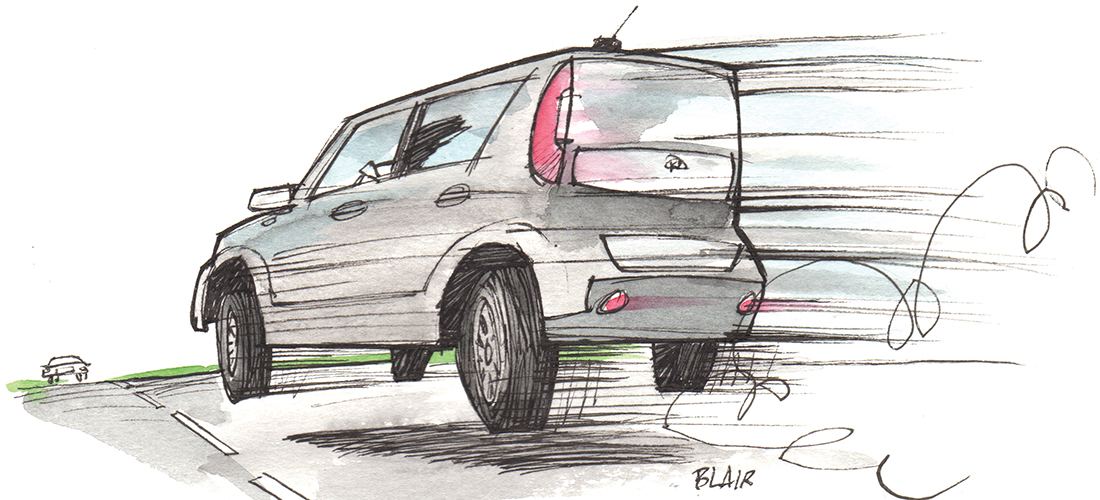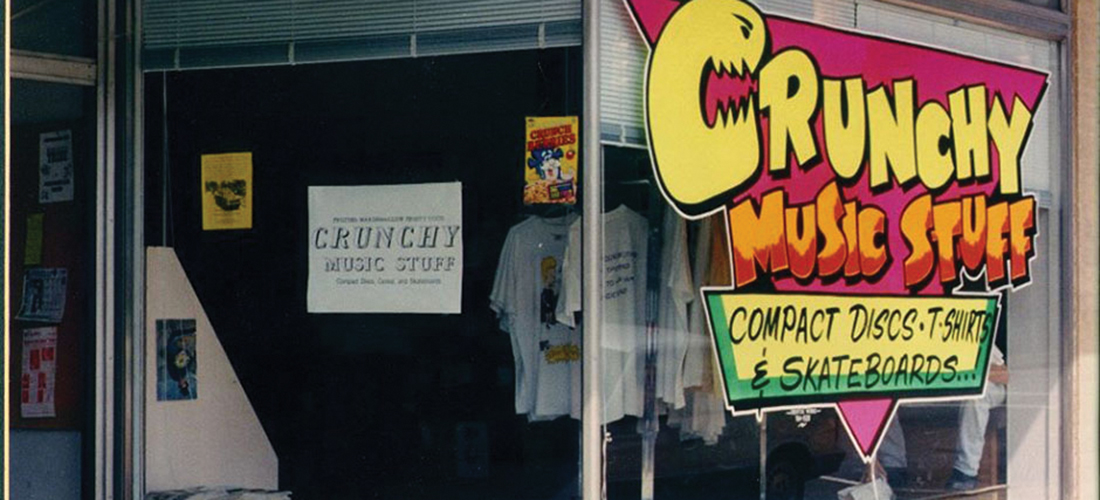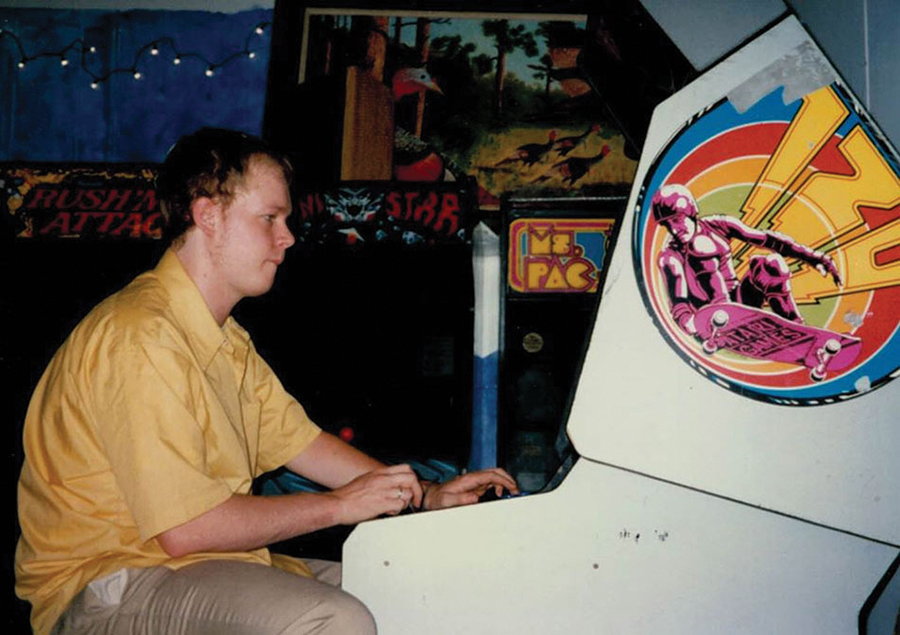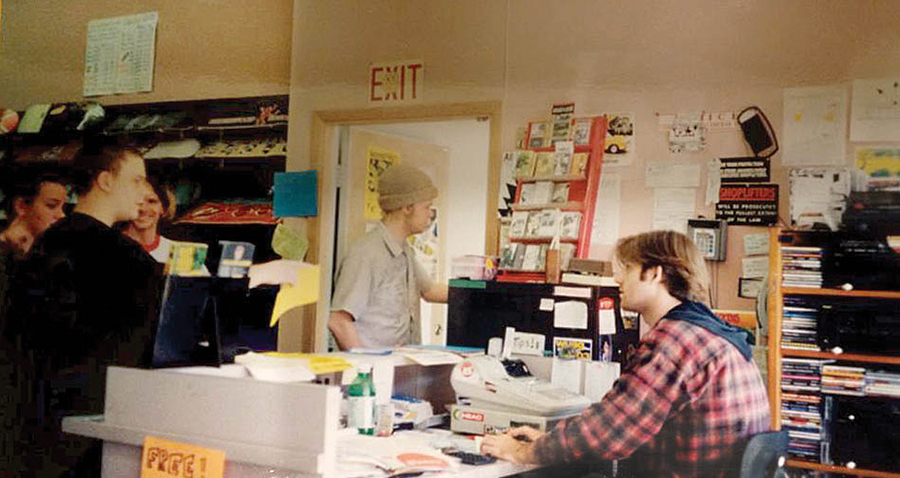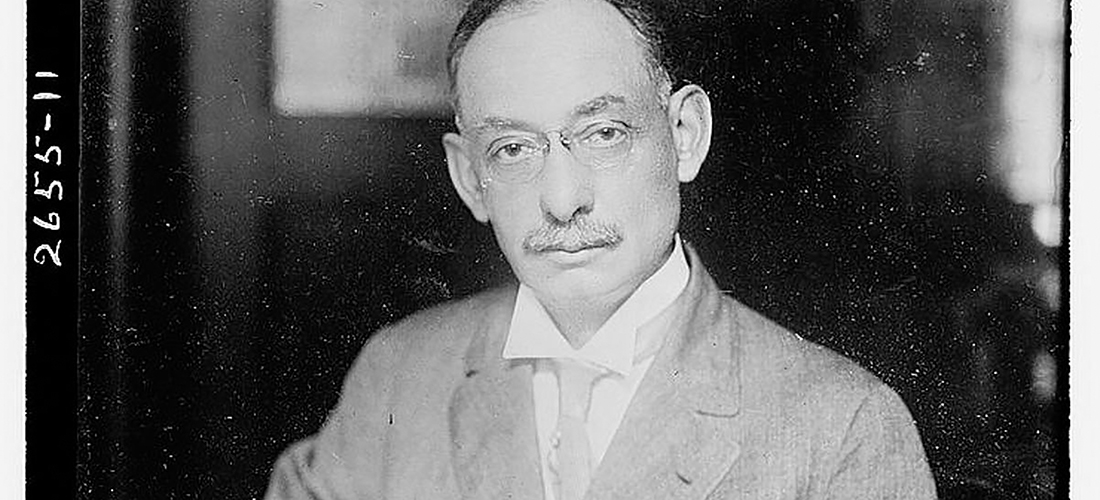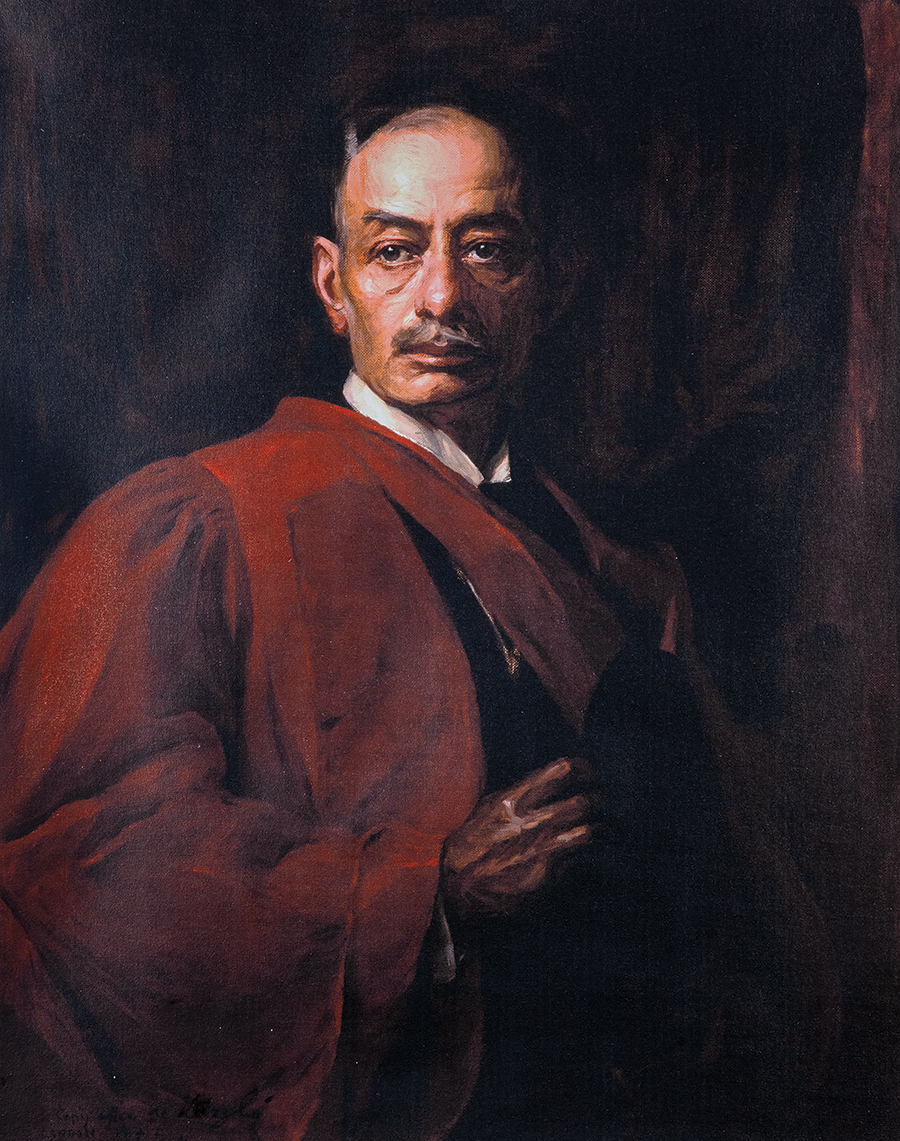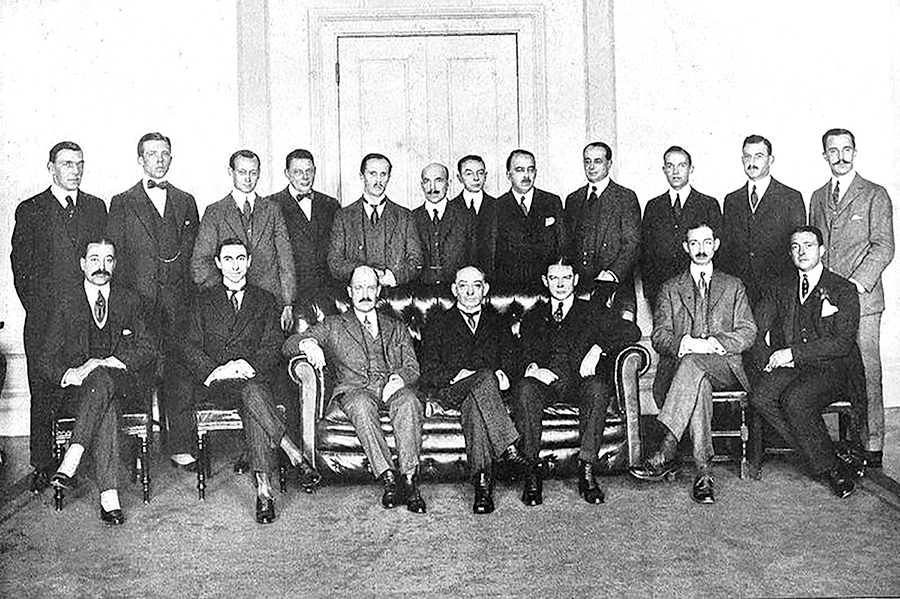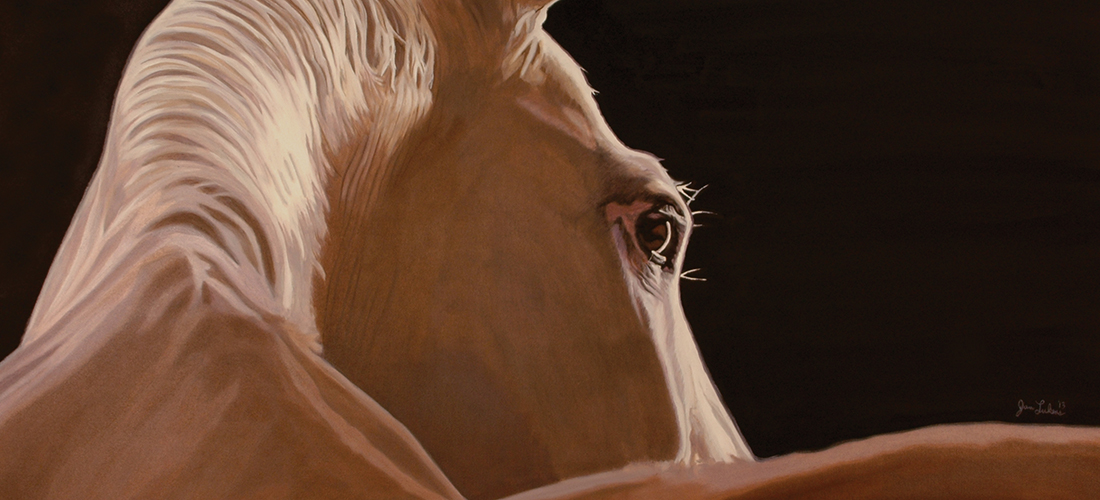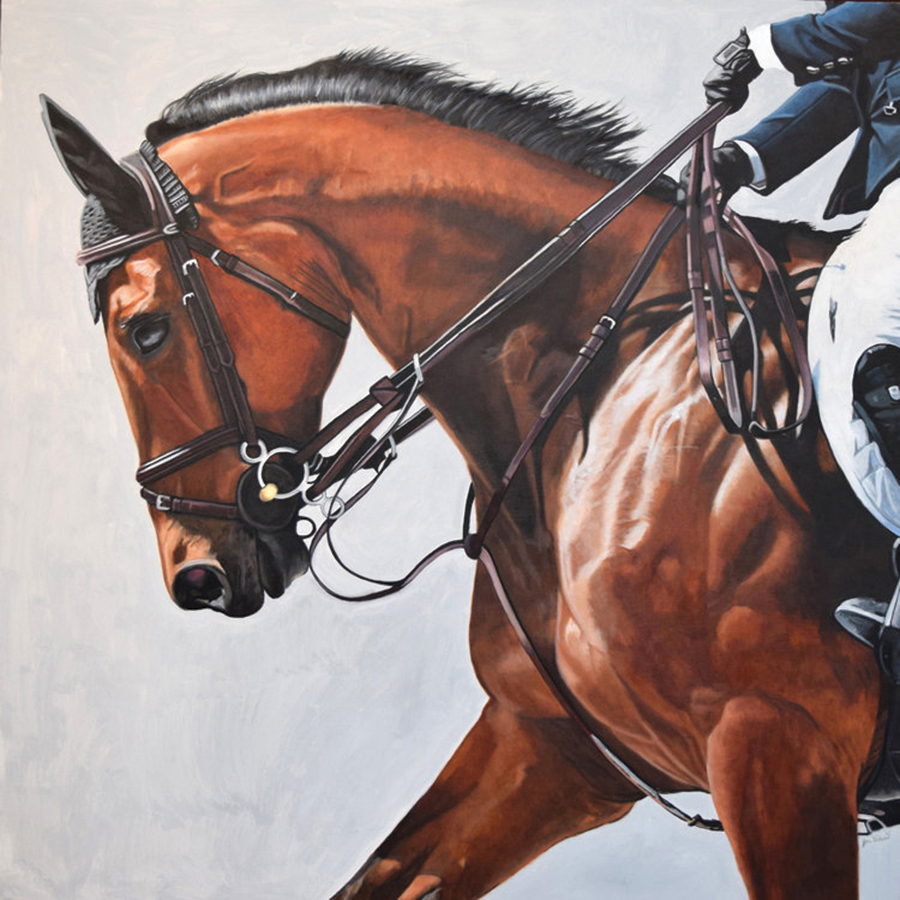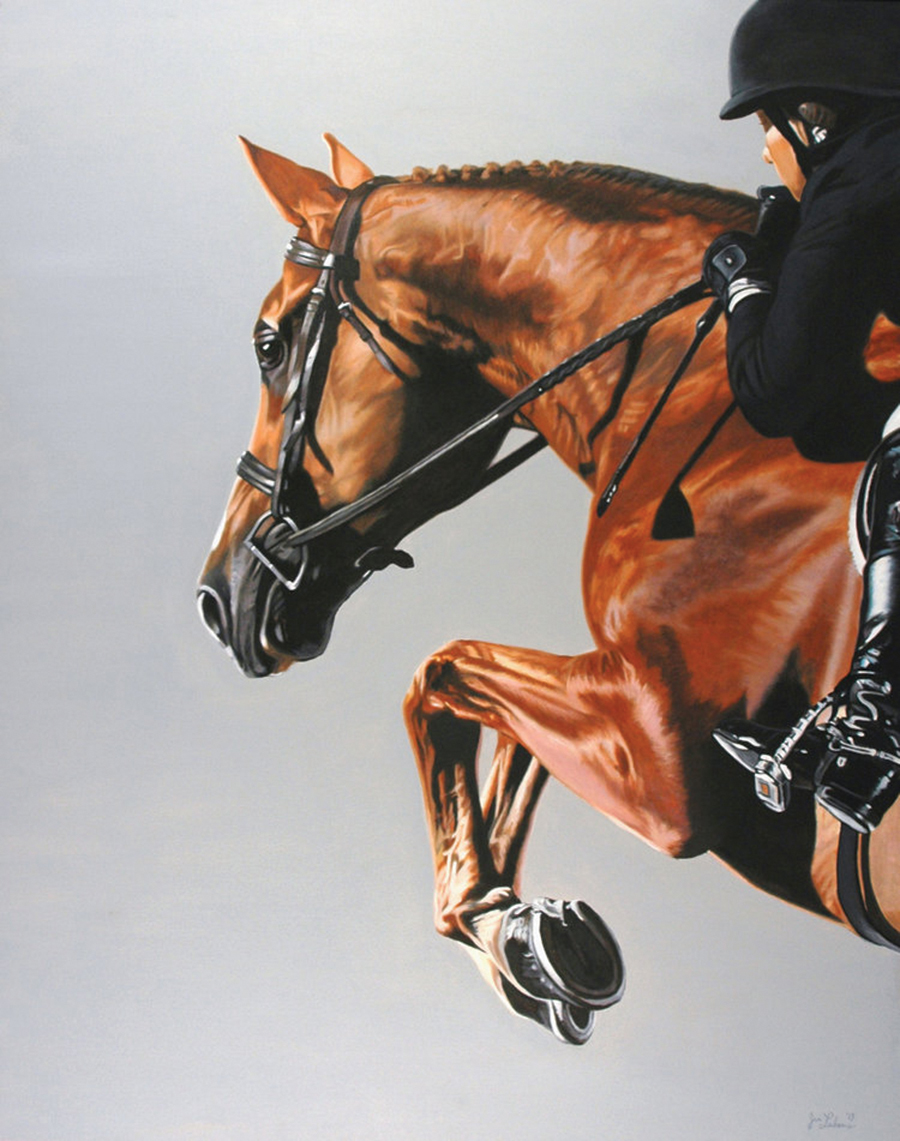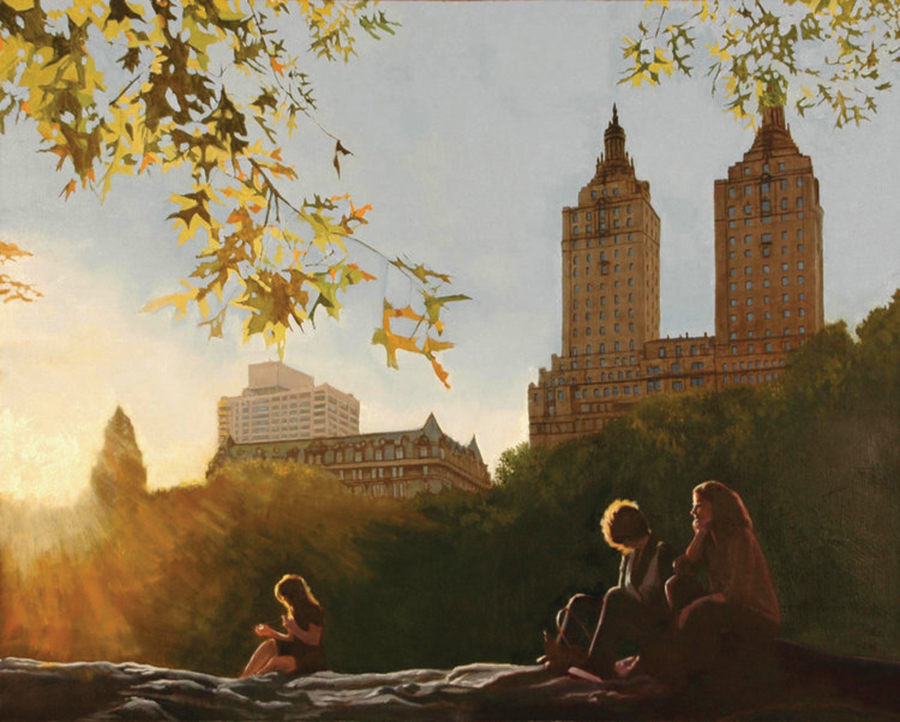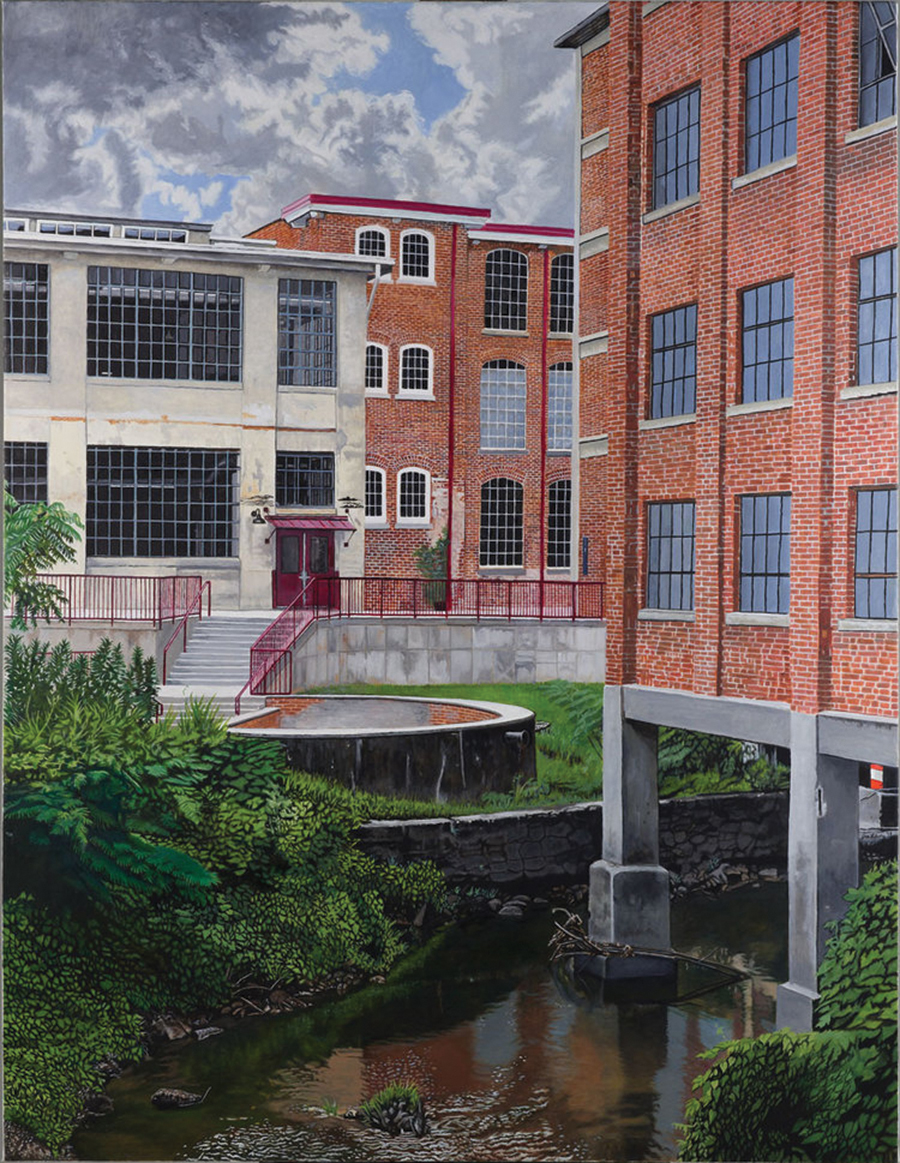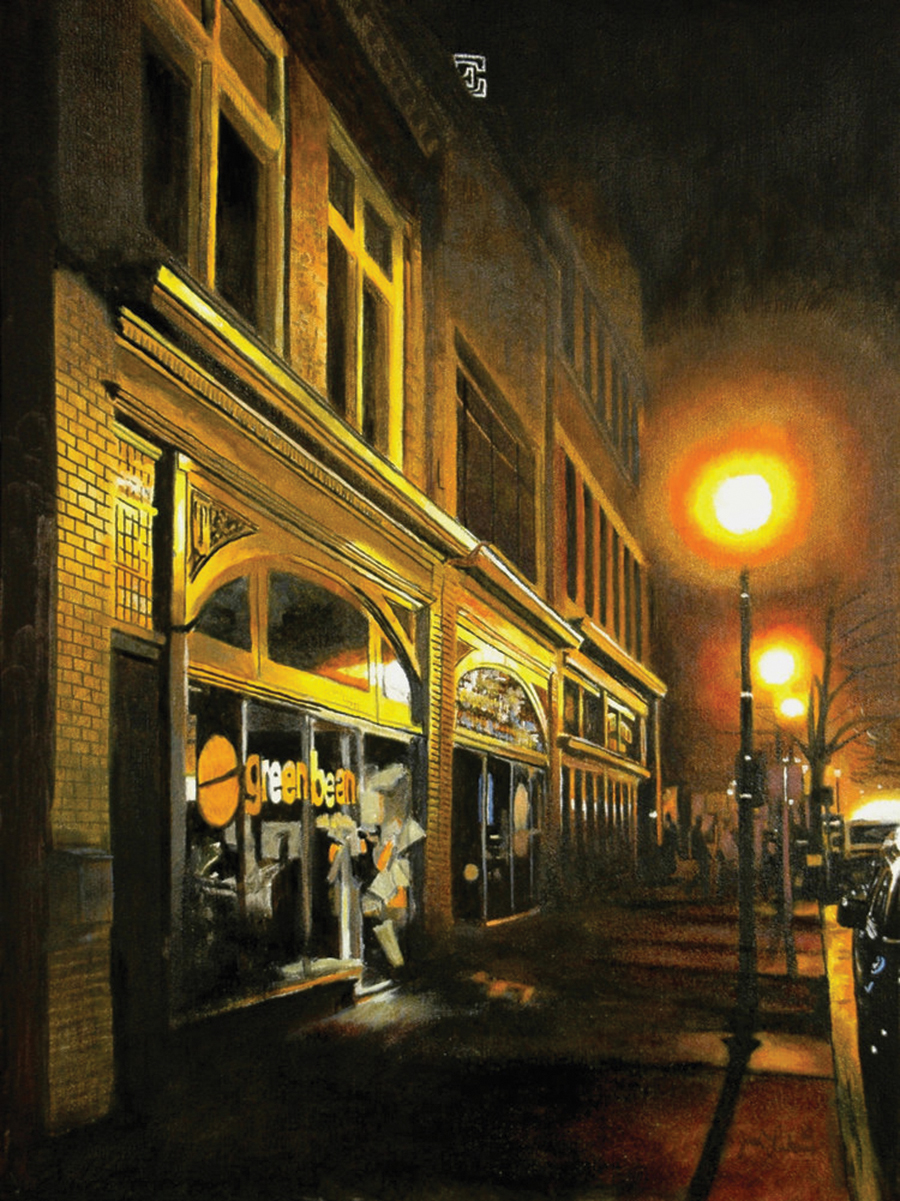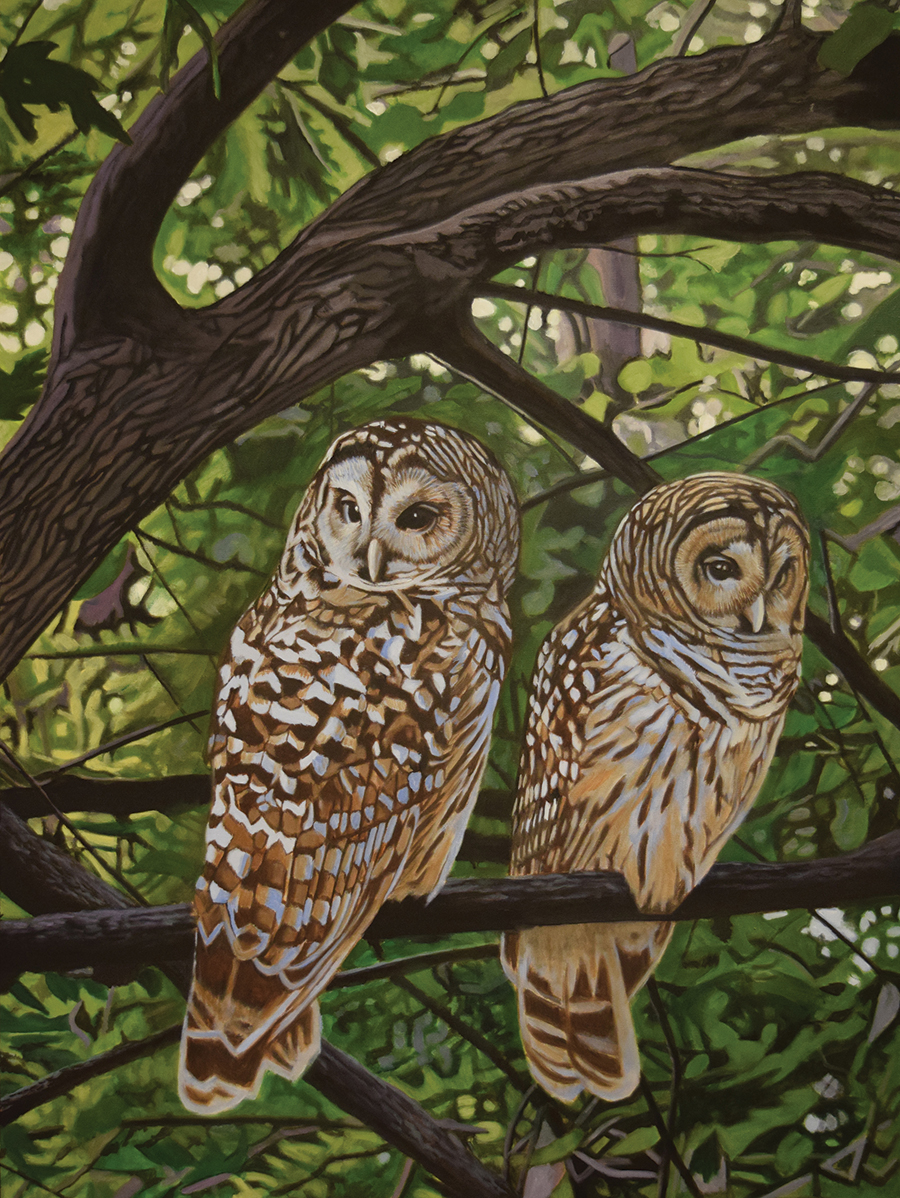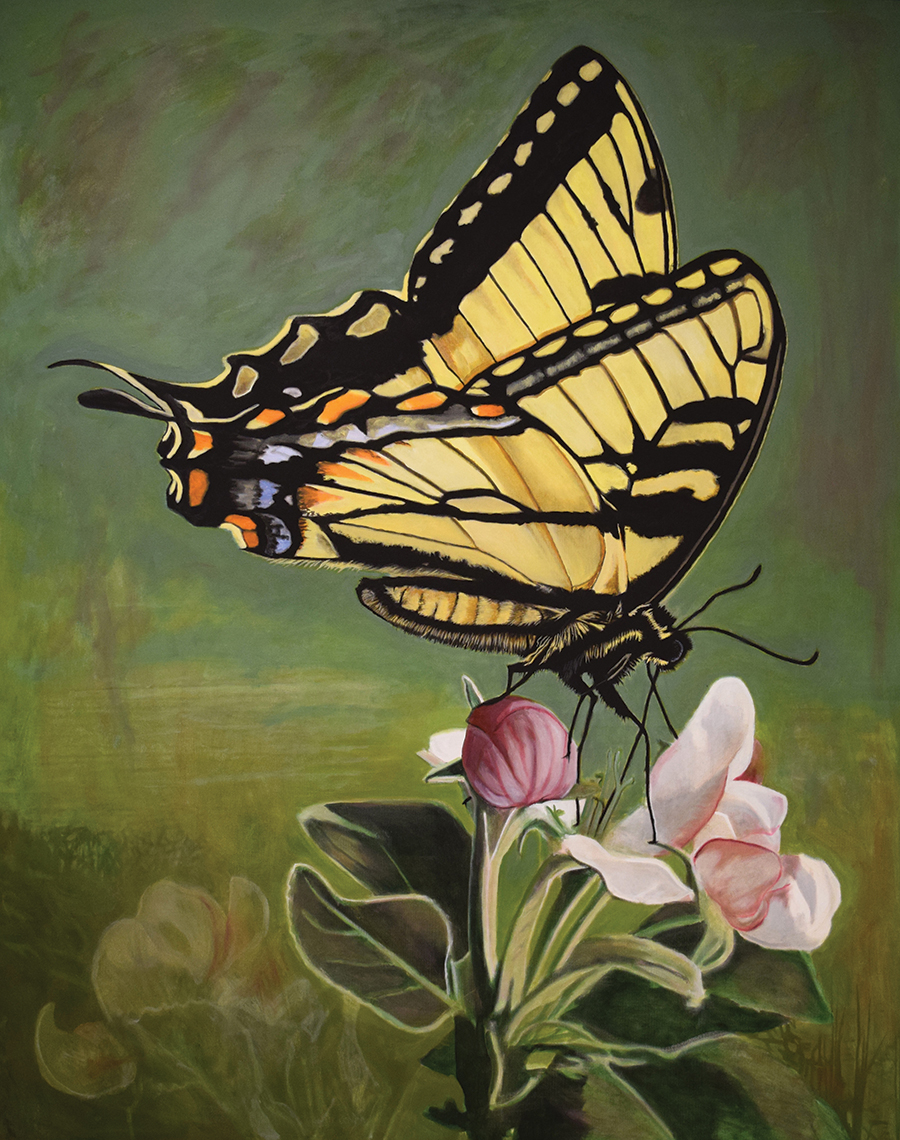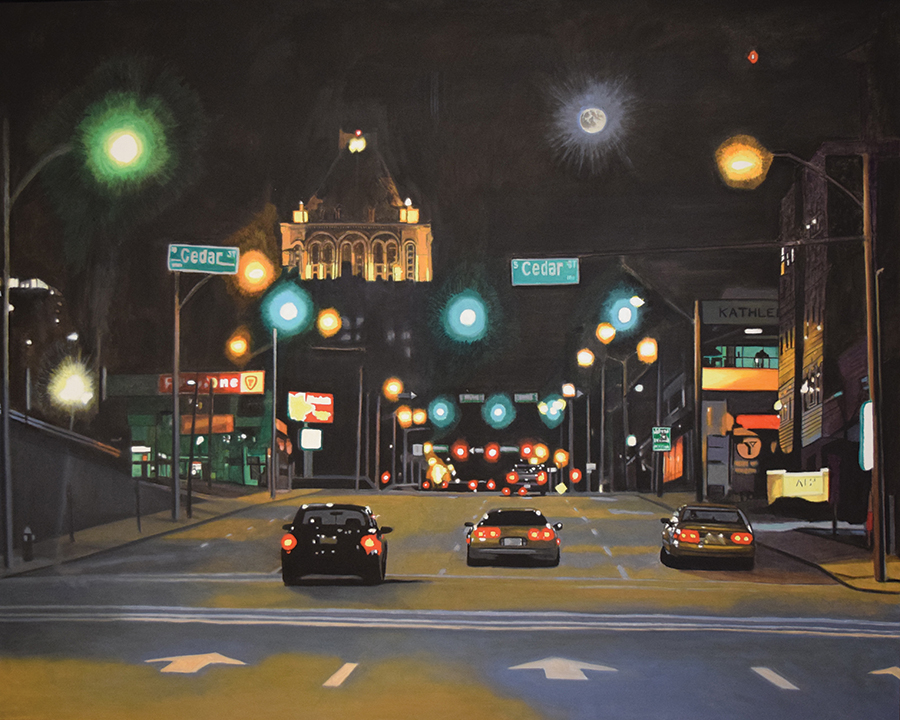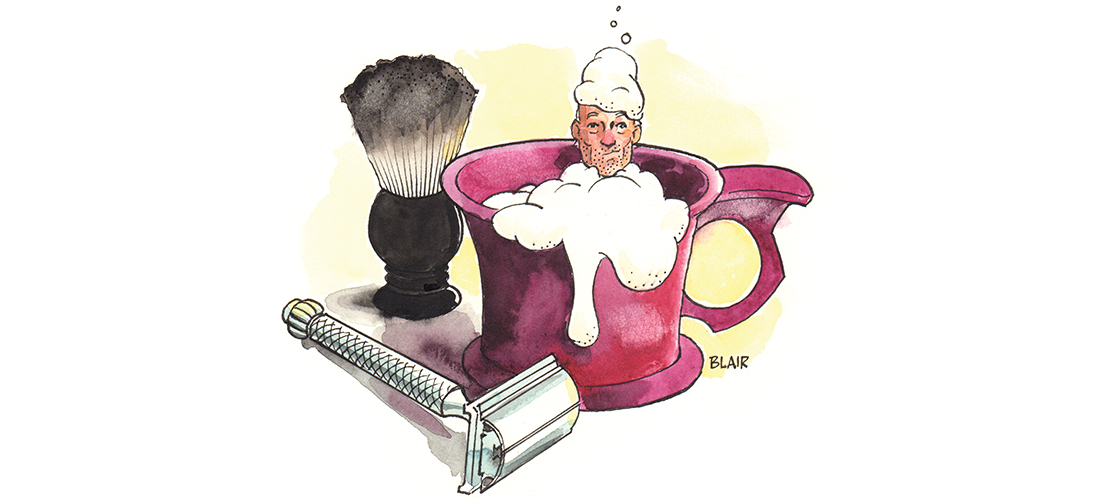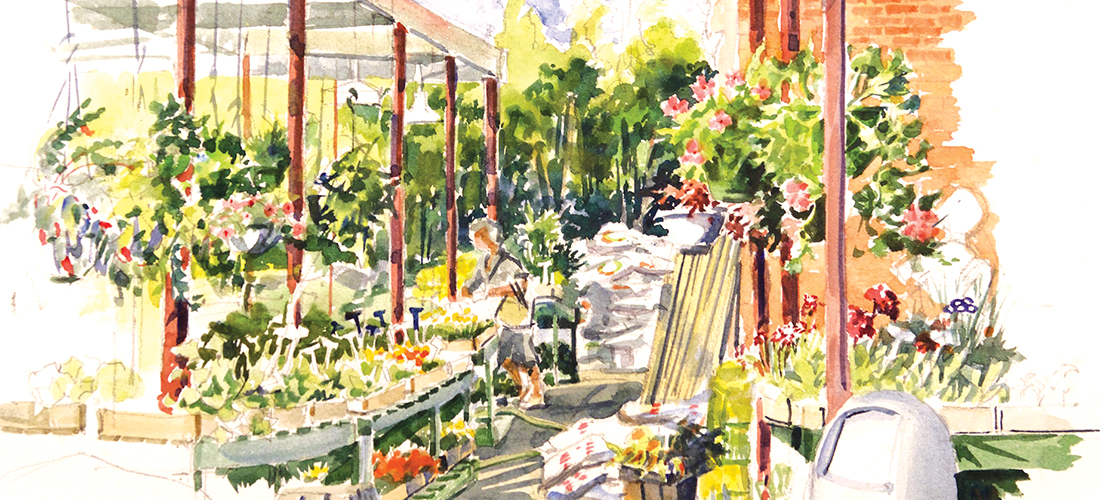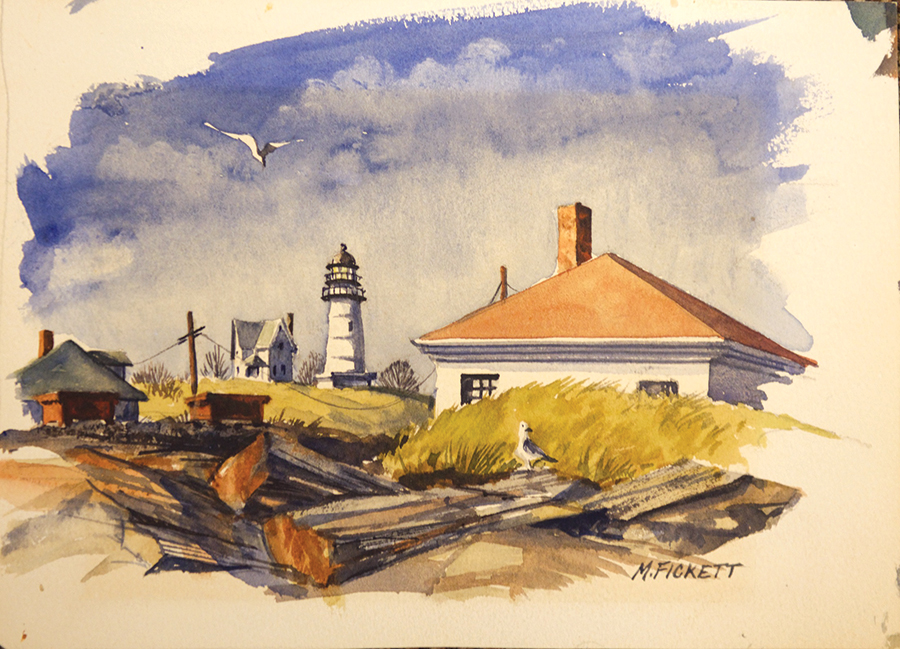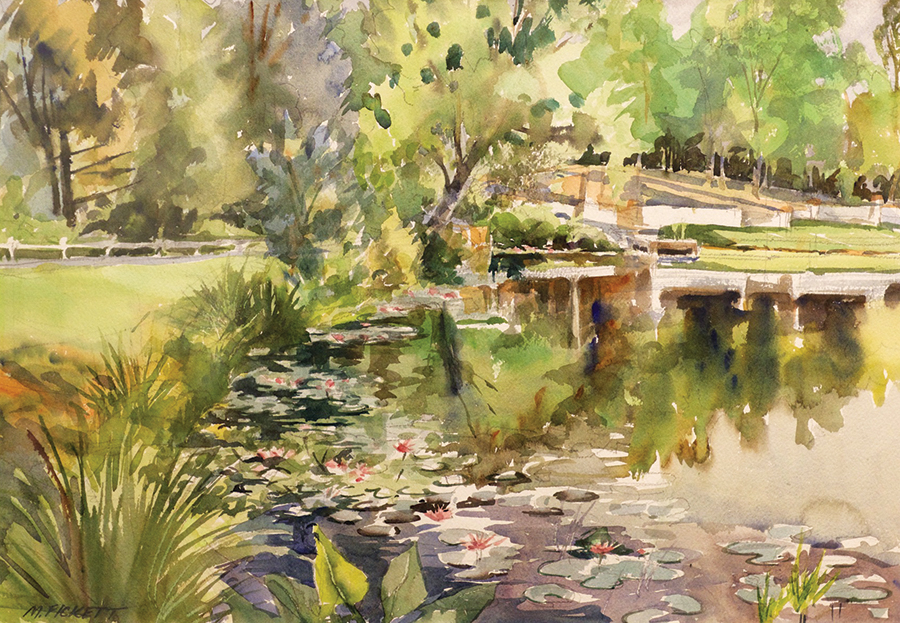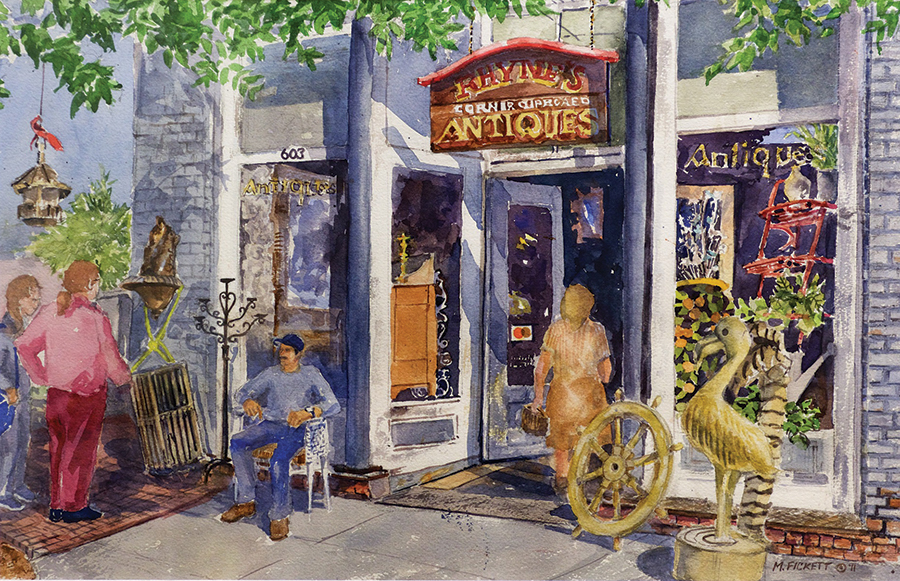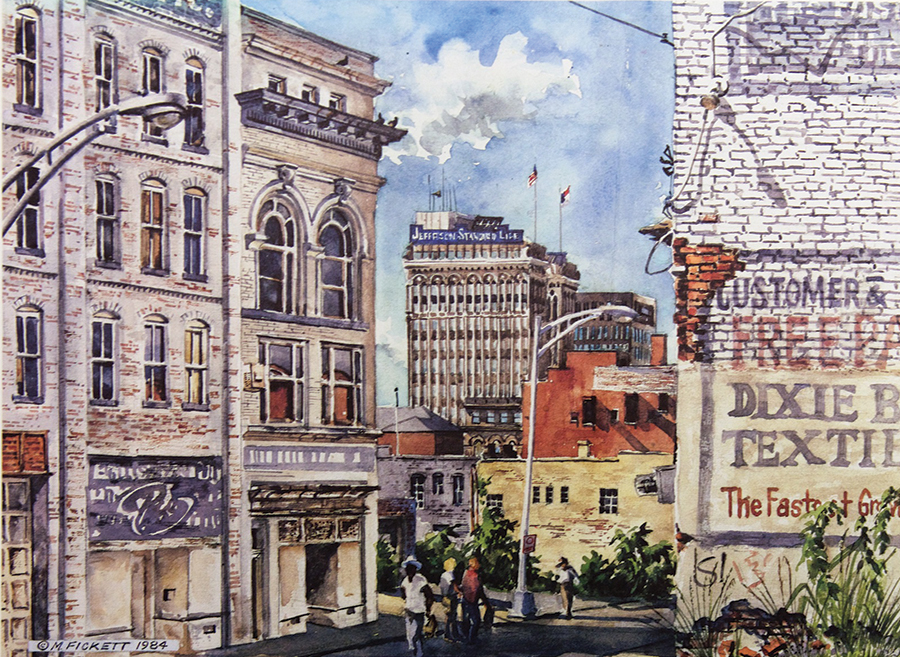For Fred and Kay Ayers, collections are the comforts of home
By Cynthia Adams • Photographs by John Koob Gessner
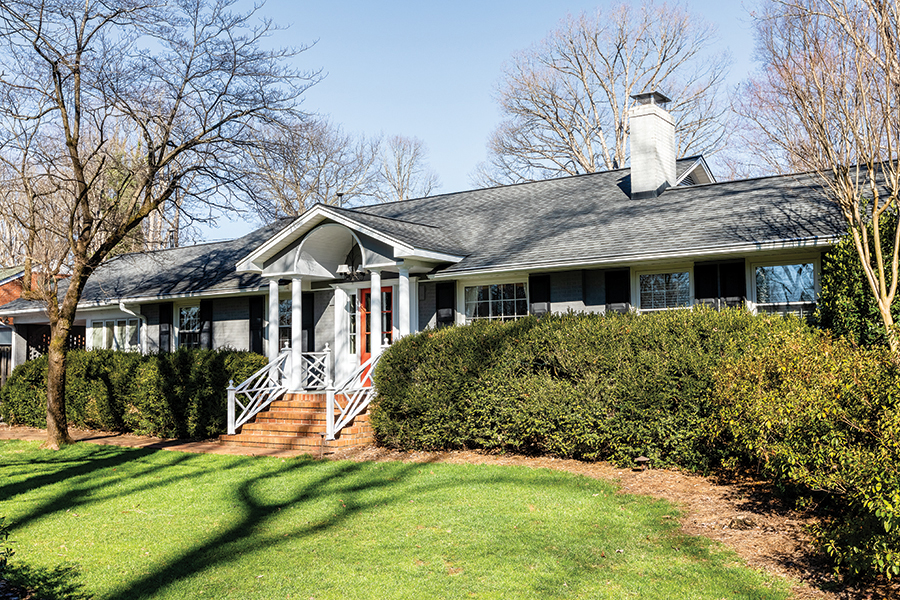
Passion is at the forefront of Fred and Kay Ayers’ Hamilton Lakes home — and at the very center of their lives. Over the past 40 years, the residence evolved to serve the things that matter to its owners— highly crafted scale models of historic planes and iconic ships, plus tiny but incredibly accurate reproductions of rooms.
The two are remarkably involved with their interests.
One step inside the door and their passions are unmistakable. Two steps farther inside, where an enormous cabinet contains the HMS Sussex, an English warship lost in 1694, and both Ayers begin to smile. They already know what you are thinking — and don’t care. And, unlike the Victorians’ amazing cabinets of curiosity, this is a home. (Though it should be noted, the term “cabinet” originally meant “room.”
And the good ship Sussex? That took years to complete.)
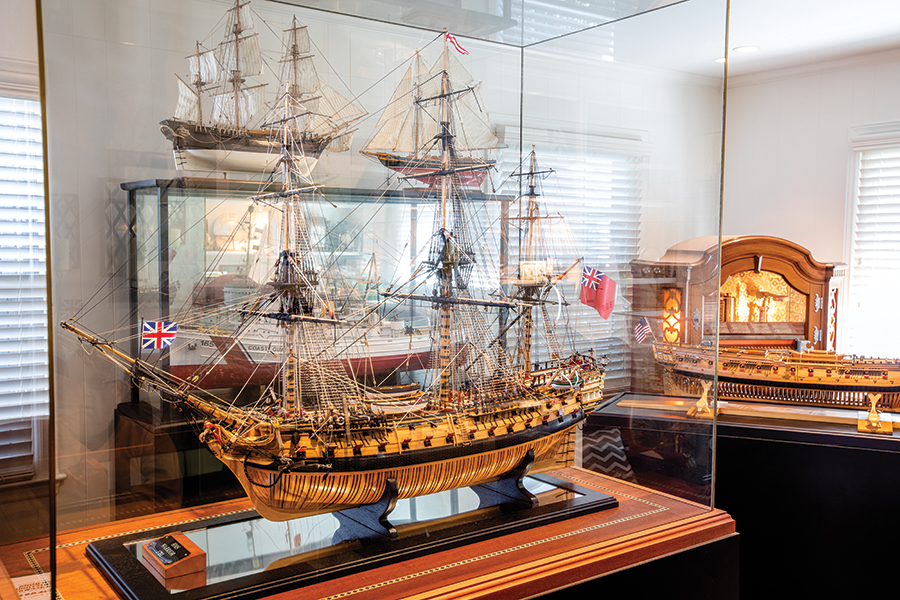
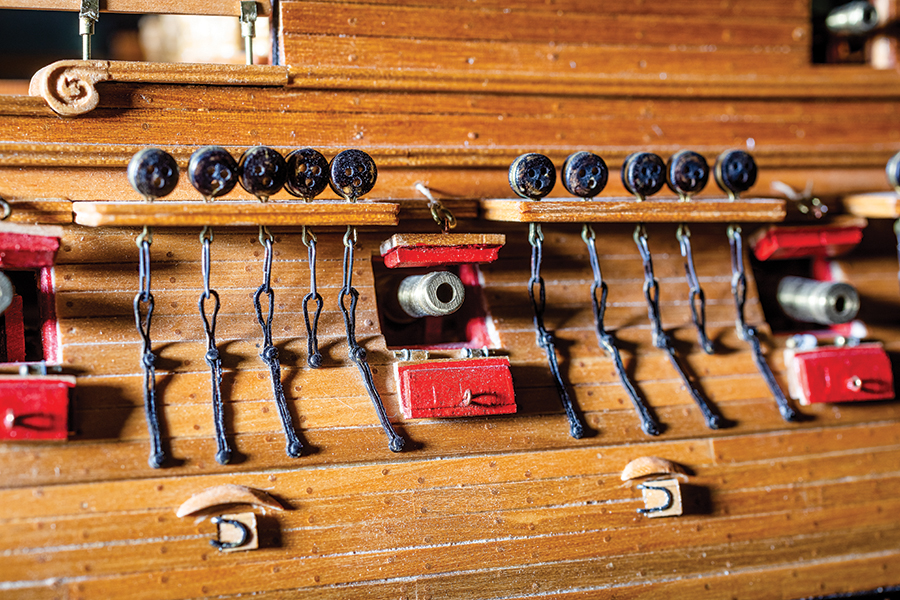
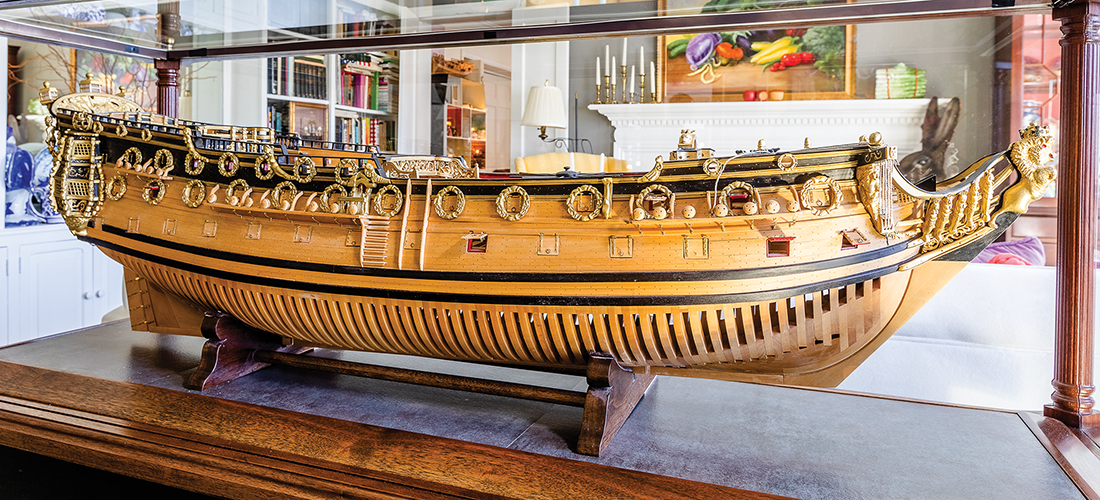
The Ayers’ 3,500-square-foot ranch was already spacious when they first moved there in 1981 as newlyweds, but it has been added onto seemingly to accommodate the owners’ hobbies and collections. Giving new meaning to the term “project creep.”
Today, the Ayers’ house and property are almost as much a museum as a home that represents a capacity to create and live with their hobbies and collections in an exuberant way. Like the Isabella Stewart Gardner Museum in Boston, or the Frida Kahlo home in Mexico City, the house exists not only as a residence, but to house what the resident collectors valued most. The Ayers give new definition to collector; they are also makers who have given themselves over to their interests.
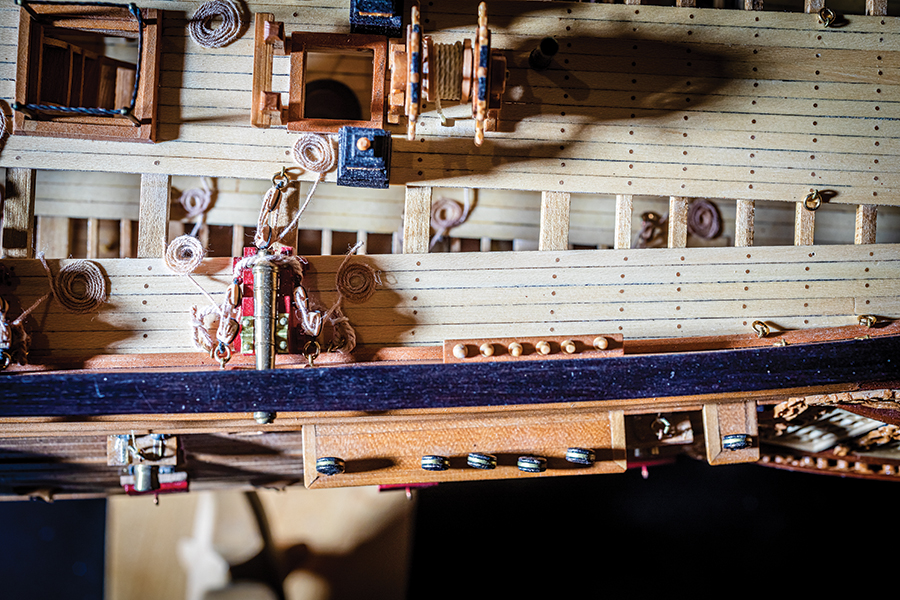
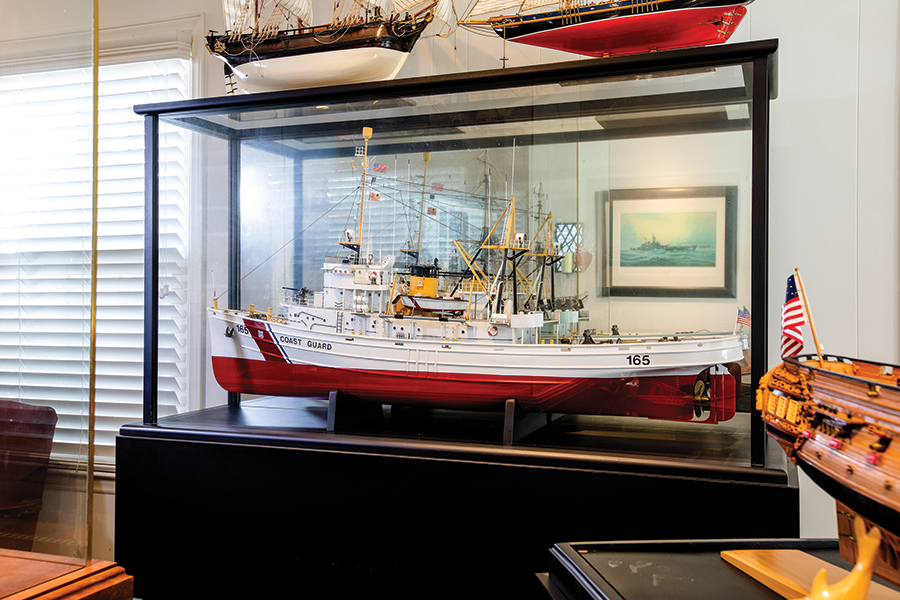
Models, created by Fred through countless hours of painstaking precision, are jaw-droppingly detailed, scale replicas of ships of various types and vintages. They bristle from wooden and glass cases. Handcrafted models of planes hang from the ceiling. These creations are museum-worthy. In fact, two of Fred’s models are in museum collections in the Wilmington area.
“On a normal day, he goes to his (work) room and works on something, and I do the same,” says Kay. But the boat models, she says with evident pride, “are what people need to know about. They’re museum-quality. He’s an artist.”
“Aw, shoot,” Fred scoffs. “There’s always somebody better than you.”
Each room of the Ayers’ home, from the entry to the gardens beyond bears the indelible stamp of the Ayers’ obsessions. Over time, the house had to change to accommodate their collections, not the reverse. Rather than moving on, they called the contractor.
“We kept adding on,” says Fred. “But the first thing we did was to put in the swimming pool.”
The swimming pool is just off the den at the rear of the house. It, by the way, is surrounded by four oversized fiberglass animals from a former miniature golf course on Battleground Avenue that the couple had invested in.
“We bought the franchise for the golf course,” says Fred. “We brought four of the animals here and three are in the country,” he says. (They’re installed where they can enjoy the great outdoors at the Ayers’ getaway near Siler City).
He jokes wryly, “that’s about all we got out of it.”
Kay says the elephant was sitting right outside for several years.
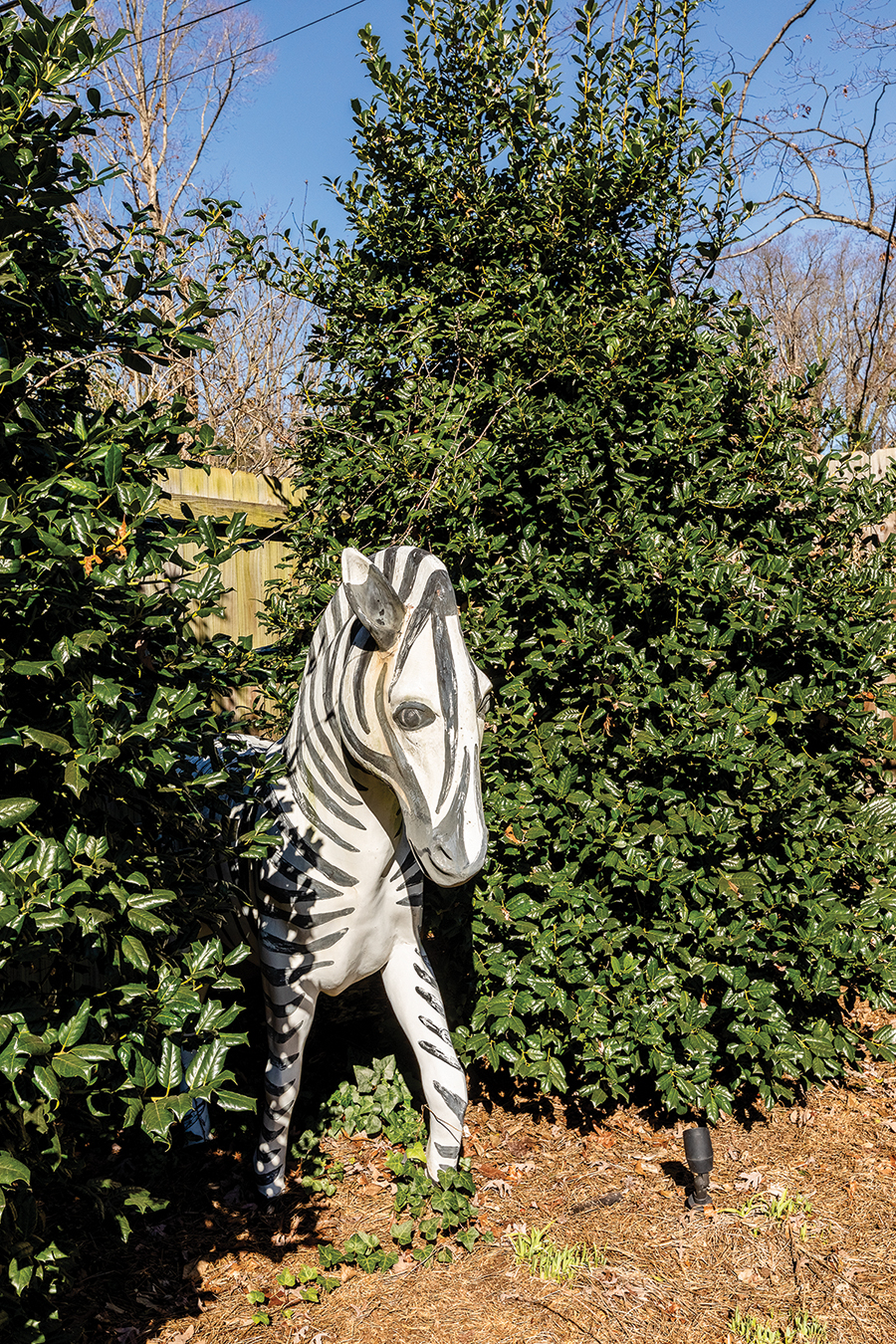
“Our neighbor, David Kriegsman, said he missed the elephant when we moved it with the giraffes to the country.” The couple add the details, shaking their heads, both chuckling.
But room after room showcases hand-built collections that span their lifetimes.
Kay calls one room the “JV — junior varsity — room” as it contains the boat models that are kit-built. “The other is the Varsity room — for scratch-built models.”
Much like cameo carvers who sacrifice precious vision to their art, it’s impossible not to wonder how Fred Ayers has any vision remaining at all.
The simpatico collecting couple came from different backgrounds — hers is finance, his is the family business, Colonial Vending Company. (More about that later.) He’s a Carolina fan. She pulls for Duke.
Yet they bonded like, well, glue, over their shared passion for creation.
“Kay’s an artist. Has a lot of good ideas,” says Fred Ayers. And by George, she can execute those ideas. Proof of this — seven glass-encased miniature rooms she created in intricate detail — much like the ones Otto Zenke designed still exhibited at the Greensboro History Museum.
She half-heartedly explains that she stopped producing them due to lack of display space as Fred’s prolific model-making expanded.
The rooms are proof of a latent artistry Kay developed after retiring from the State Employees Credit Union, which she managed. Her mother, Ella Lewis Cobb, was an artist, who sold depictions of family coats of arms, and commissioned pastel portraits. Her works are scattered throughout the house, as well.
Cobb also painted several faux details in the Ayers’ home, including a bathroom that Kay jokes “I can never change.”
Ayers’ father, Fred Sr., developed the family business, which included amusements and music (including video games, juke boxes, you name it.) His father was originally a bank teller. When he left banking at age 45, he bought a jukebox route. Fred Jr. was only 5 at the time, so he grew up with vinyl records and developed a full initiation into amusements. He joined the family business part time at age 16 in 1963 before attending college, as the business morphed into the Fred Ayers Music Company.


“The shop was on Greene Street, next to a Scott Seed,” says Fred. “It later moved to Chapman.”
Today, the 76-year-old business is known as the Colonial Vending Company. It remains under the auspices of Fred Jr.
He points to a 1949 Wurlitzer. “We saved it off the route; we used to drive them [jukeboxes] to the dump.”
It is a symbolic collectible, a still-working reminder of the jukebox origins of a business created by his father.
Yet since childhood, Fred immersed himself in creating scale models. He found helping hands in the neighborhood and also downtown.
In the 1950s, the Ayers’ family lived on Wright Avenue in Sunset Hills. “We moved to Audubon Drive in 1954, after Hurricane Hazel,” he says, not due to storm damage, although he remembers downed power lines around the former Ham’s restaurant on Friendly.
He most fondly recalls mentors in the neighborhood and downtown near his father’s business. One, named Bob Foster, lived on Wright. He was a librarian by vocation, but “messed with model airplanes.”
“We’re still friends,” Fred says.
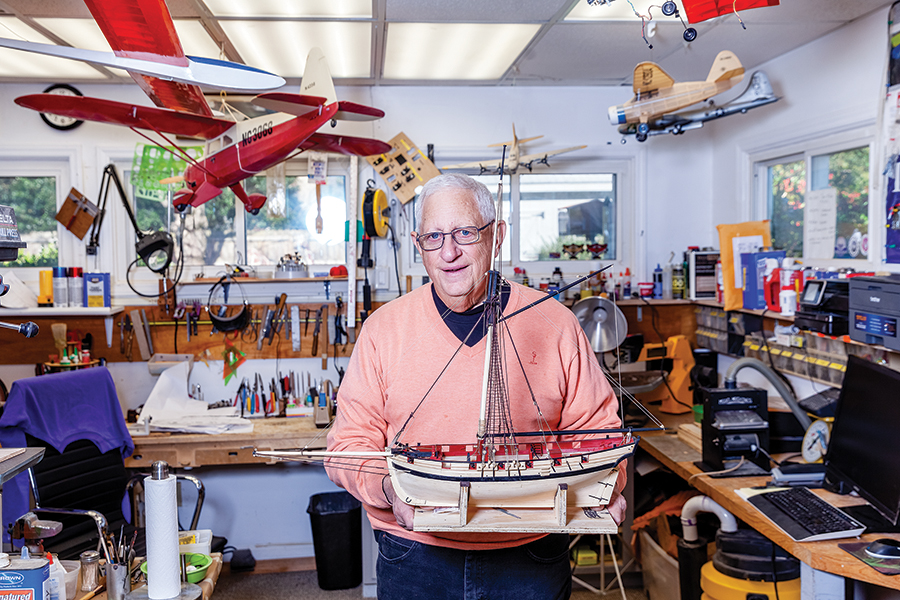
Then another key influence was Harold Bunting, who owned a hobby shop. “He was upstairs over the Coble Sporting Goods store downtown.”
Bunting would help kids learn, Fred says. “He helped a lot of kids with models, helping them build. He dedicated himself to helping kids.” Now, Fred “loves to see kids get into working with their hands.”
Young Fred spent hours helping neighborhood fathers building pinewood derby cars, while assembling his own plastic model airplanes in his attic. He spent much of his spare time scavenging for supplies to repurpose.
“I went to construction sites and asked for scrap.”
Come Christmas, young Fred would ask for tools. “A hammer and saw.”
Now his workshop contains every tool, gadget, and necessity a kid could dream of owning.
On a winter’s afternoon early in January, an oversized truck in the couple’s driveway was backed up to the street with a handwritten sign indicating that UPS should leave packages there. The Ayers were about to go check out a collectible in Florida that interested them.
Meanwhile, a Ferrari sat nearby under cover, quietly minding its own business and managing to keep a low profile, hemmed in behind the no-nonsense truck. A chainsaw whined farther down the street, a pleasant, albeit ordinary, tree-lined thoroughfare.
Except, the sign on the truck is a mystery that deepens later, as most of the deliveries to Fred Ayers are wee supplies extremely small in scale — the odd bits and bobs he needs to complete replicas. Hardly large enough to need a truck bed.
Of course, Fred sources many things online, even the rare cars he admires around the globe, locating one in South Africa. So, it’s not necessarily the case that all packages are small.
As an adult, the maturing Fred moved onto the real thing — enjoying big boy’s toys.
Fred Sr. liked statement cars, which must have been an influence.
“He owned a pink T-bird with a black interior,” Fred remembers. “My first car was a [Datsun] 240 Z, white, acquired in the 1970s when they first came out.” He wishes he still had it.
(“His tastes are more expensive than mine,” inserts Kay. “He would keep everything he ever had if he could,” she adds.)
And Fred has a need for speed. “My nerves are very good,” he grins.
Good enough to corner the red 1990 Ferrari in the carport. “It has 16,000 miles on the odometer,” he offers.
And certainly, good enough to drive a Ford G 240 replica, the same as the one depicted in the recent Oscar-winning flick, Ford v Ferrari. He has owned or still owns two MGs, BMWs, Porsches, a Lotus, a 1967 Mini Cooper S and a Daytona Cobra, also a kit car.
“I got the GT40 from South Africa,” Fred says. “Built as a 1966 replica. Shipped in on a container.” There have been other exotic cars in his past. “I had a Lotus Super 7, and traded it for a 2005 Mercedes.” He calls the Mercedes “Kay’s car,” yet he drives it to the office, she points out. Meanwhile, Fred wishes he had the Lotus back.
The couple also acquired more mainstream cars, like Navigators, Tahoes, a Lexus, and even Ford trucks.
But the GT40 Ford, the replica, is Fred’s current favorite.
“I want to find a Morgan,” says the tireless collector of rare cars. He keeps several cars in the country where the couple often spend weekends. Here, a garage and other buildings have slowly evolved into a country place with a water view.
Over the past 40 years, Fred Jr. has built more than 50 plane and boat models. One, a one-eighth scale replica of North Carolina’s most famous battleship is now owned by the N.C. Port Authority and on display in the Roll of Honor room inside the ship at the USS North Carolina Battleship Memorial.
That replica was nearly three years in the making.
Fred began working on the battleship model in the kitchen in 1991, taking multiple trips to Wilmington to study the actual ship while the work progressed. He photographed and noted, even memorized, details of the ship on repeat trips to the USS North Carolina, now permanently docked.
A catalog photo first caught his eye. Then the real thing proved it would be a worthy challenge.
Eventually, the sheer size of the battleship model overtook the kitchen. This prompted the couple to add on the workroom at the rear of the house because, Kay smiles, “He needed a place to work and we needed a place to eat.”
It was challenging, even though Fred used a pre-made fiberglass hull and superstructure. He assembled all else, which included decks, towers, even guns. The Ayers rented a van and drove it to the Port Authority in Wilmington in 1993 on New Year’s Eve.
The van was of necessity; the cargo was too large for their car — the finished model was 91 inches long, 13 inches wide, and 24 inches high.
News accounts reported on a gift that both Fred and Kay downplay. The News and Record wrote about the replica:
“The detail is astounding. Tiny life preservers, fire extinguishers, fire hoses and nautical flags dot the gray exterior of the ship. At the stern, two OS2U Vought Kingfisher seaplanes stand ready to zoom into the wild blue yonder. Nearby are two cranes which were used to pluck the planes from the sea and return them to the ship.”
That was nearly 30 years ago, Fred protests, batting away praise. Many, many projects ago.
He built a Liberty ship and donated it initially to the Bellamy Mansion, also in the Port City. “I think it is at the Port Authority. I loaned it to them, then later just left it with them.” Frankly,” Kay adds, “We’ve got nowhere to put it.”
Fred also built troop transport ships, a submarine and other historically precise ships of many types and eras.
A loosely organized group of model builders, including retired doctors and artists, meet for what Fred calls “show and tell.” The craftsmen live in Southern Pines, Raleigh, Beaufort and Matthews.
“We try and get together every couple or three months. Last month we met at I-Hop in Clemmons. We talk shop.”
That prompts him to mention, “Everybody wants to see each other’s shop, and sometimes that’s where we meet.” He adds that there are a lot of doctors who create models.
“They’re good with their hands.” Also, exacting.
Although he was never a sailor, the Chapel Hill graduate served in the National Guard in 1970.
All the while, Fred explores full-size cars, planes and now even full-size ships. He recently built a boat — “a big one” Fred clarifies. It is a “Chris-Craft type mahogany one.” He points out the name painted on boat’s stern: Miss Kay.
As for collecting, it isn’t sated. Fred has his eye on a 2002 Morgan, a rare car built with a partly wooden frame. He pulls up an image of the roadster online; it is now in Savannah, Georgia. It’s probably the same one he nearly bought years ago, and he is itching to call the owner.
Meanwhile, their Amazon blue-front parrot, 19-year-old ironically named Byrd, calls to him reproachfully, as if chiding: “Fred. Fred. Fred.”
Fred looks away from the coveted Morgan on the computer screen to answer. “What Byrd?”
It was a rhetorical question; Byrd doesn’t respond.
And Kay shakes her head, grinning. OH
Cynthia Adams is a contributing editor to O.Henry. Her first car was a rusty powder blue Corvair, bought from Preacher Lanier — the same car made infamous by Ralph Nader’s Unsafe at Any Speed. Meanwhile, her Dad drove a Chevy pickup and her mother’s sled was an Elvis Presley pink Cadillac.

